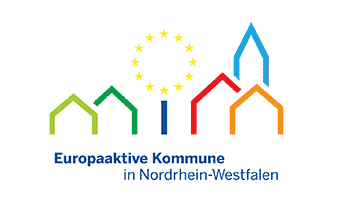Inhalt
Historischer Rundweg - Board 8
Catholic Church
Weeze is one of the oldest parishes on the Lower Rhine. The parish is first-mentioned in 1226.
Weeze is one of the oldest parishes on the Lower Rhine. It is first mentioned in 1226 and in 1326 the local citizens are called „Cyriakus-people“, as the church is consecrated to Sankt Cyriakus. As early as in the 9th century there is documentation of a small wooden church, which stood on the right side of the River Niers, as part of the middle-ages farm complex “Villa Geizefurt” in the area of today’s farm community of Kalbeck.
Late-gothic Church
Earlier romanesque and early gothic buildings were followed in the 15th century with a new building with an elongated eastern chancel, transept and tower. Since then the Sankt Cyriakus Church presents a delightful picture of late gothic architecture of the Lower Rhine lands.
Altars
Next to the high altar, which was originally consecrated to the parish Saint, Cyriakus, later to John the Baptist, second patron Saint of the church and the municipality, up until the 17th century there were up to seven side altars. They were consecrated to Saint Cyriakus (votive-altar), Anthony, Catherine, Nicholas, Sebastian, the Virgin Mary and the Holy Ghost. On top of that there was also a “compassionate God” altar in the vestry. The side altars were gifted by private persons and the gentry since the 14th century and were accompanied by pensions and wealth. This income helped to cover the maintenance and sustenance of the priests, vicars, who as a service in return for the donations prayed for the salvation of the souls of the donating families. Many of the brotherhoods, of which the Cyriakus and John brotherhoods still exist, referred to these altars.
Destruction during the Second World War
For the church and the local area the bombings through the Allies and the blowing up of the church tower through German troops in February 1945 were devastating. Only the eastern chancel remained intact. The large majority of the interior decoration fell victim to the destruction.
The important art collection of the church, especially a number of wood-carvings and etchings, were stored outside of the church and, as a result, were saved, more-or-less in very good condition. Some of the wonderful wooden sculptures still decorate the church interior today and even include tips for Jacob’s pilgrims on the way to Santiago de Compostela. Especially worth mentioning are the seated Saint Jacob (around 1500) and a new-gothic statue of the apostel. The most cherished sculptures are the „sweet Madonna of Weeze“ (about 1350), Sankt Cyriakus und „God the Father“ (both around 1500).
Rebuilding
Today’s church was built between 1953 and 1955, and the Architect Bernhard Kösters from Munster included the remaining late gothic chancel construction and the two polygonal sides of the transept in his planning, but had the rest of the damaged elements removed. The tower was, as was the case with the prior tower, built on the side of the nave aisle.
Between 1955 and 1984 the House of God with its sanctuary faced to the west. After that it was returned to face the east quire.
Merger
In 2005 catholic parishes of Sankt Cyriakus Weeze and Heilig Kreuz Wemb were merged to form the parish of „Sankt Cyriakus in Weeze“.
Sankt Cyriakus lies in ruins, view from the market square in the direction of the church entrance, after 1945.
Sankt Cyriakus, interior, view in the direction of eastern quire with new-gothic high altar (F. Langenberg/Goch, 1898), 2011.
The wooden sculpture of Sankt Cyriakus from the early 16th century. According to legend the roman deacon Cyriakus freed the daughter of the Emperor Diokletan from demonic illnesses, here symbolically presented as the cave dragon, which the Saint has put on a chain. In Weeze and in the Lower Rhine this is colloquially known as „Weeze has the devil on a chain“ (In Wees häbbe se dän Düwel an de Kett!). Photograph: Jens Hofmann/Restaurator, 2013.


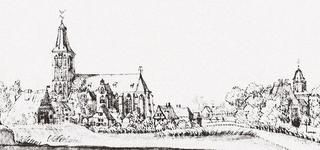
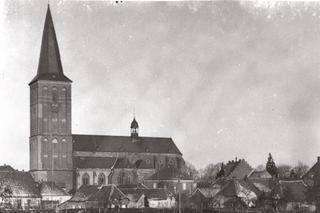
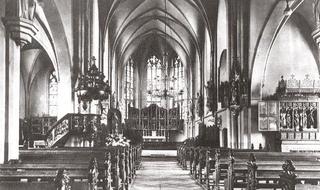
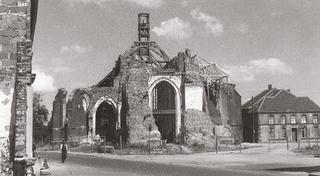
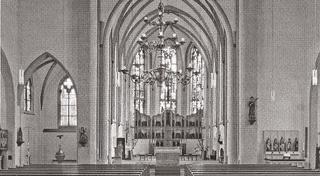
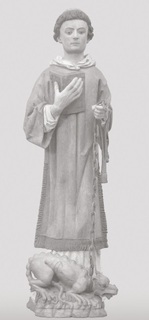
 02837 9100 (Zentrale)
02837 9100 (Zentrale) info@weeze.de
info@weeze.de Facebook
Facebook